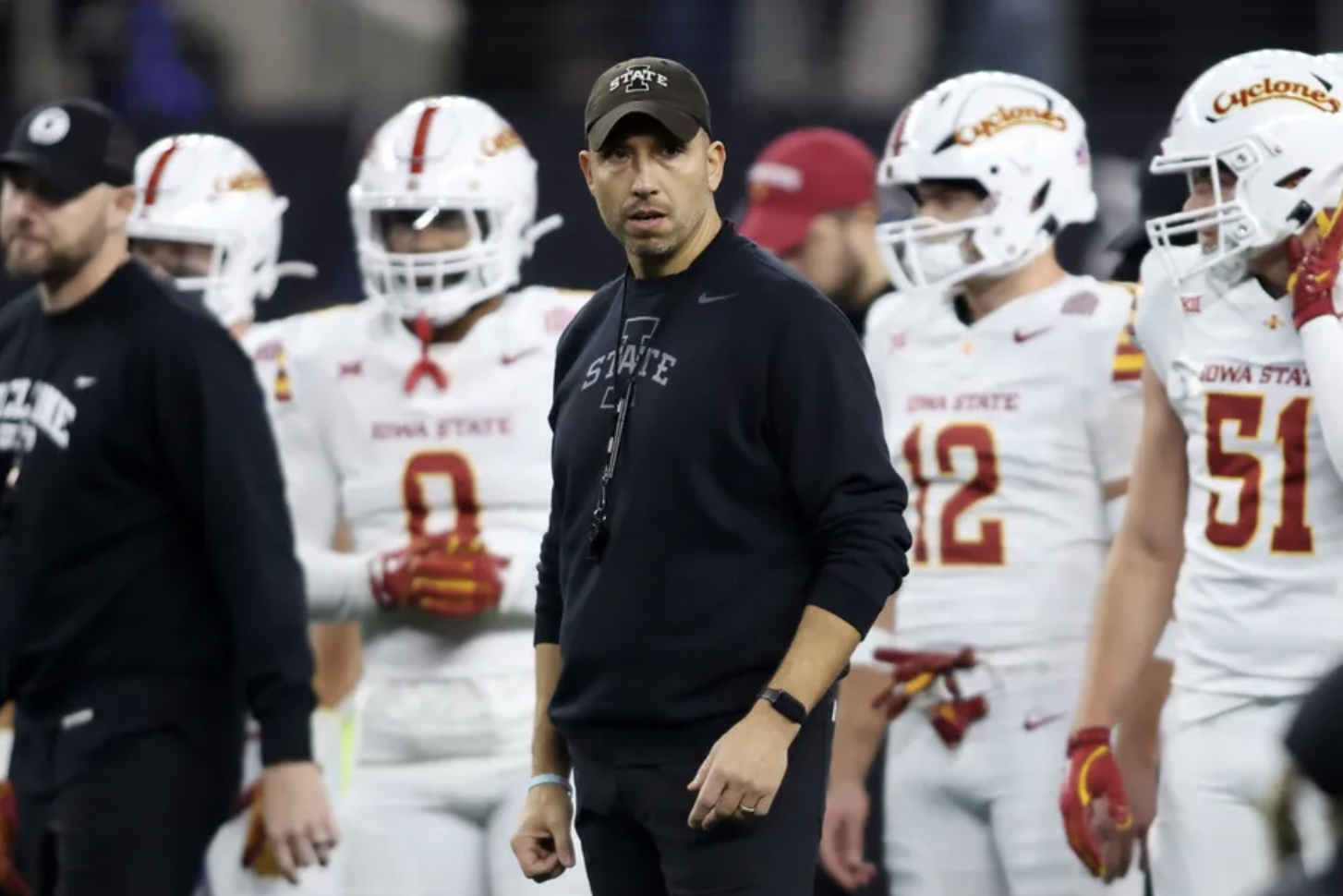
The long wait for college football’s return ends Saturday, when a pigskin-deprived nation turns its eyes to Ireland and a matchup between No. 22 Iowa State and No. 17 Kansas State.
The first game of the season may also be the last time the Big 12 Conference commands America’s undivided attention — unless bona fide championship contenders emerge.
“Overlooked” may seem an ironic label to apply to a conference that produced the Heisman Trophy winner a season ago. That winner, Travis Hunter, came from the sport’s biggest media circus at the University of Colorado.
But much of the navel-gazing around Boulder has followed former Buffaloes quarterback Shedeur Sanders to Cleveland, while Deion Sanders’ role as coaching’s chief spectacle has been usurped by North Carolina’s Bill Belichick.
With the spotlight on Colorado dimming, the Big 12 as a whole has faded from national conversation.
Week 0 opponents Iowa State and Kansas State are two of only three Big 12 teams ranked in the preseason Associated Press Top 25 poll — tied with the ACC for the fewest among the four College Football Playoff automatic-qualifier conferences. With reigning champion Arizona State ranked No. 11, all three of the Big 12’s power-conference counterparts also boast multiple teams ranked higher than any Big 12 squad.
The lack of faith in the league carries over from last season, when the Big 12 was the lone power conference to send just one member to the Playoff. That perception matters since rankings directly impact the perceived quality of wins.
The good news is that perception can change quickly with on-field results.
Nonconference play will matter. In Week 1, Cincinnati hosts a resurgent Nebraska; Baylor welcomes the SEC’s Auburn Tigers to Waco; and TCU has an opportunity to deflate Belichick’s North Carolina hype right out of the gate.
Perhaps more critical to the Big 12’s long-term Playoff standing is for a clear favorite or two to emerge at the top of the league throughout the season.
The Big 12 is no worse top-to-bottom now than it was before realignment; in fact, it may be stronger. Every recent addition except Colorado has at least one 11-win season since 2018, and all but BYU and CU have reached either the Playoff or a New Year’s Six bowl since 2014.
Still, during the four-team Playoff era, Oklahoma’s consistent presence bolstered the league’s national reputation. Without the Sooners and Texas, the Big 12 risks falling into the same trap that doomed the Pac-12.
A key factor in the Pac-12’s demise was its lack of Playoff visibility, sending just one representative from 2015 through 2022 (Washington in 2016). That absence hurt television revenue and national reputation despite the conference being competitive.
In that same vein, the 2024 Big 12 race was arguably the most exciting in college football. Kansas authored a Cinderella run reminiscent of Danny and the Miracles’ 1988 NCAA Basketball Tournament title, knocking off Iowa State, BYU and Colorado in succession.
That run set up a dramatic finish. Arizona State, in just its second Big 12 season, defeated BYU in a classic that secured its first outright conference title since 1996 — and nearly a spot in the final four, if not for an overtime no-call in the Peach Bowl against Texas.
But everything that made the Big 12 race thrilling also undercut its postseason hopes. Without the league’s automatic bid, Arizona State may not have reached the Playoff. Runner-up Iowa State barely cracked the Top 20, finishing No. 18 ahead of its Pop-Tarts Bowl win over Miami.
To avoid the Pac-12’s fate, the Big 12 needs its top teams to deliver consistently. With Kansas State and Iowa State positioned as preseason front-runners, their Week 0 clash could be a valuable tone-setter for the league.
This news was originally published on this post .






Be the first to leave a comment